How To Get A Skydiving License
Skydiving
Posted by: Skydive Palm Beach
8 months ago
Tandem skydiving is often the first taste people get of skydiving, but what might surprise you is that skydiving is a full-fledged sport, with national and even world-level competitions! There are specific requirements to become a licensed skydiver, allowing you to jump with friends, become an instructor, or earn special ratings for things like demo jumps into stadiums. So, if you’ve ever thought about diving deeper into the sport, you might be wondering: How do I get a skydiving license, and what does that really mean?
Skydiving Licenses Explained
In the U.S., most dropzones are affiliated with the United States Parachute Association (USPA), the governing body that sets the standards, guidelines, and licensing requirements for skydiving. There are four USPA license levels: A, B, C, and D. There are also instructional and specialty ratings for those who want to go beyond recreational jumping.
Each license requires you to master specific skills, perform maneuvers, and gain essential ground knowledge. Here’s a breakdown of what to expect at each level.
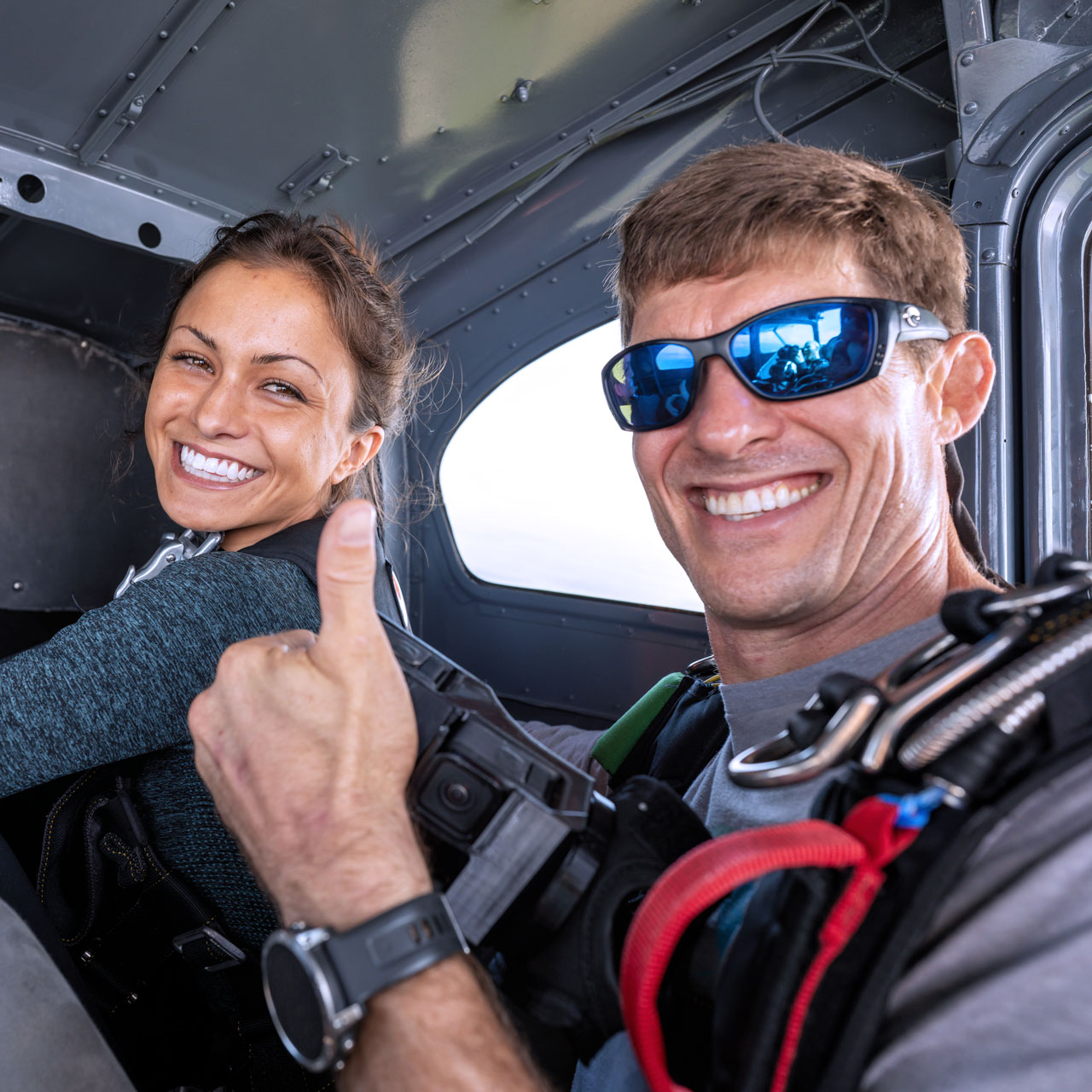
USPA A License
The first skydiving license you’ll work towards is your A license. Until you get it, you’re considered a student skydiver, meaning you’ll have more restrictions compared to licensed skydivers. For example, you need to complete a jump at least once every 30 days to stay current, you’ll face lower wind limits, and you’ll be limited in terms of who you can jump with.
Once you have your A license, the restrictions loosen up. You can jump with any licensed skydiver, set your own wind limits, and need to jump once every 60 days to stay in date.
How do you get a skydiving license?
To earn your USPA A license, you must:
- Finish a certified student program
- Complete a total of 25 skydives
- Perform all the required maneuvers outlined in the USPA proficiency card
- Learn to pack your parachute
- Pass an oral and written exam that tests your ground knowledge
How much does it cost to get a skydiving license in the US?
This can vary depending on the location and the school you choose. When exploring how much a skydiving license costs, you’ll encounter a range. Students can plan to spend anywhere from $3,000 to $5000 or more for skydiving lessons and to obtain their USPA A license.
USPA B to D Licenses
As you move up through the B, C, and D licenses, the requirements get more advanced. Each step comes with new goals, like:
- Improving your landing accuracy
- Increasing your total jump numbers
- Jumping with other skydivers in formation
- Gaining more in-depth ground knowledge and completing written exams
To earn your D license, for instance, you’ll need to complete at least 500 jumps, demonstrate excellent landing accuracy, and perform advanced maneuvers.
Additional Ratings
Once you’re licensed, the sky isn’t the limit! You might choose to go the professional route and pursue an instructional or specialty rating. Some popular options include:
- Coach rating: Allows you to start working with students and is a prerequisite for all other ratings.
- Accelerated Freefall Instructor (AFFI): Teach others how to skydive solo.
- Tandem Instructor (TI): Guide first-time jumpers on tandem skydives.
- Pro Rating: Perform demo jumps into stadiums and events.
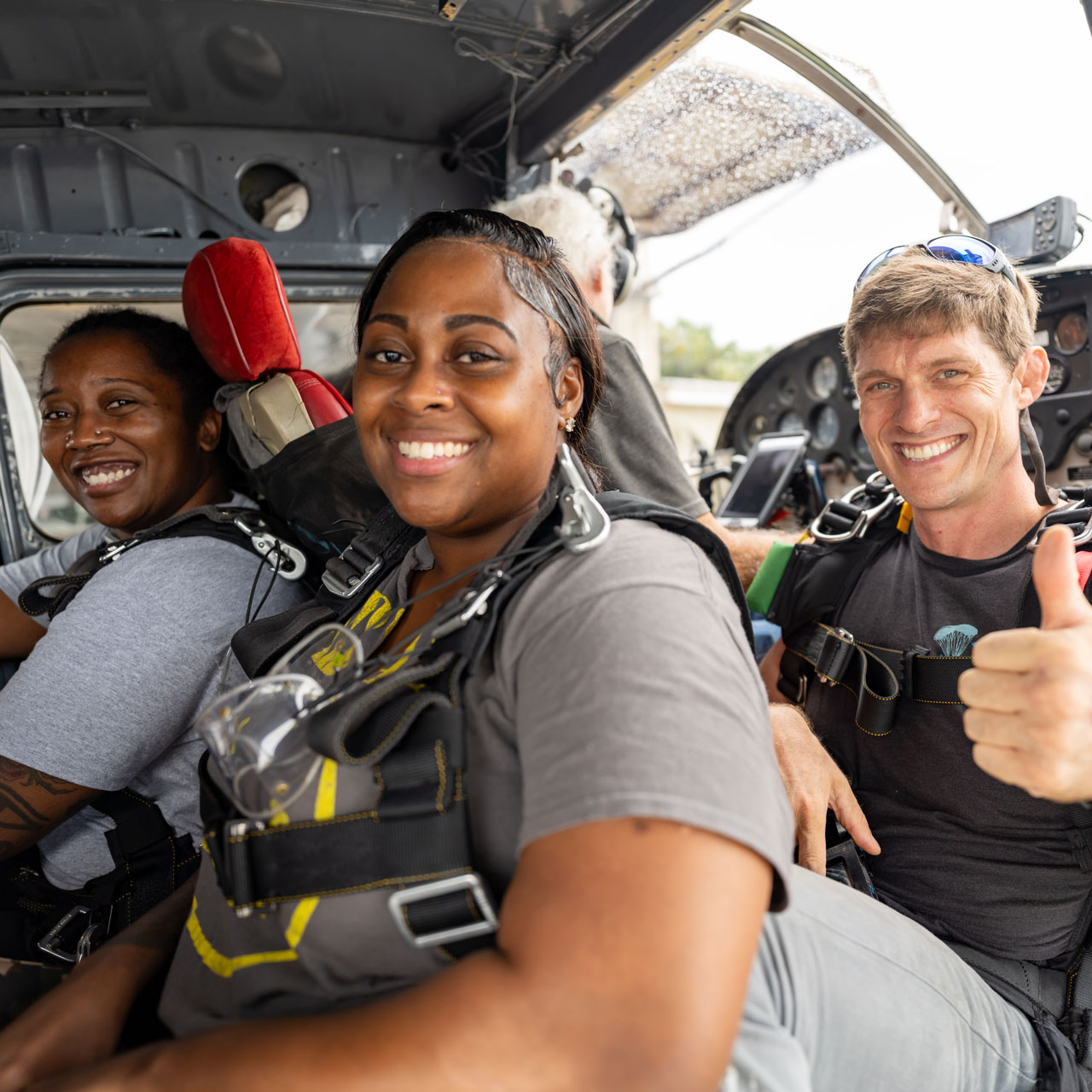
How to Become a Skydive Instructor
The type of skydive instructor you want to be will dictate the ratings you need to achieve. Each rating requires additional in-air skills and ground knowledge. Intense instructional courses must be completed and passed, and continuous training standards must be met throughout the year to keep your rating current.
The possibilities are nearly endless, whether you want to compete, teach, or explore specialized types of skydiving.
The First Step
Now that you have a better idea of how the licensing works, you might be wondering about the first step you need to take toward achieving your A license.
Many learn-to-skydive programs require or strongly recommend doing a tandem skydive first. Why? Because skydiving isn’t just physically challenging – it’s also mentally demanding. Contrary to how the professionals make it look, it is hard to learn how to skydive. We’ve found that students who start with a tandem jump often perform better when they move on to their first solo jump.
Can First-Time Skydivers Go Solo?
The answer is yes, but it depends on the program. Some student programs allow you to jump solo on your first skydive, although you’ll usually be accompanied by instructors in freefall, you will be under your own parachute. Before doing this, you’ll complete a comprehensive ground school where you’ll learn the skills needed to save your own life.
Our recommendation? Start with a tandem. It’s the perfect introduction to the sport, and you’ll feel more confident when it’s time to make that solo leap.
Once you’re ready to dive into the First Jump Course (or solo ground school), it’s essential to do some research to find a quality program. Look for a school with strong reviews and a reputation for running a well-organized operation. You’ll want a program that offers plenty of jumps with an instructor, as this hands-on guidance is key to building your skills and confidence. Wind tunnel time is another great perk – it can really accelerate your progress.
While we don’t offer a student program at our facility, we can certainly help steer you in the right direction.
The Next Step
Ready to get a taste of this amazing sport? Book your tandem skydive with us today and see what all the fuss is about! Blue skies!
Categories:
You May Be Interested In:
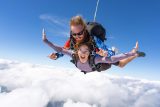
Can You Talk While Skydiving?
3 weeks ago by Skydive Palm Beach
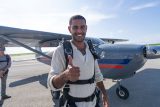
The Most Unforgettable Engagement Idea, EVER!
1 month ago by Skydive Palm Beach
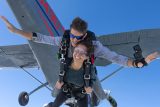
3 Phases of Skydiving: What Happens After You Exit the Aircraft?
2 months ago by Skydive Palm Beach
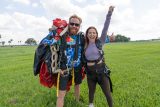
What Happens After the First Jump?
2 months ago by Skydive Palm Beach
